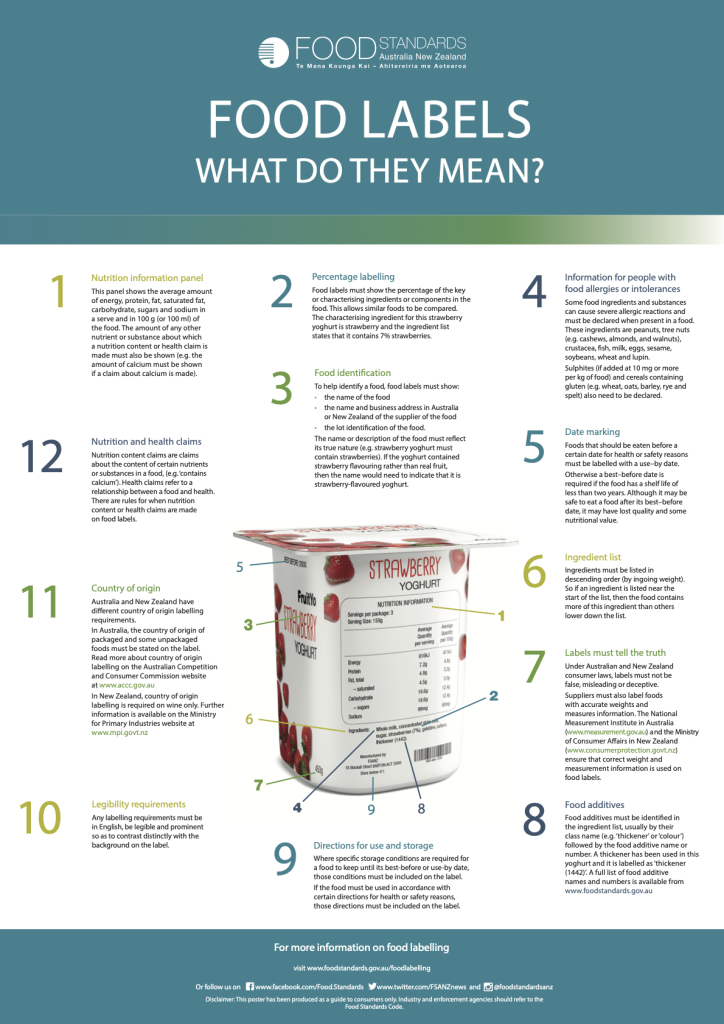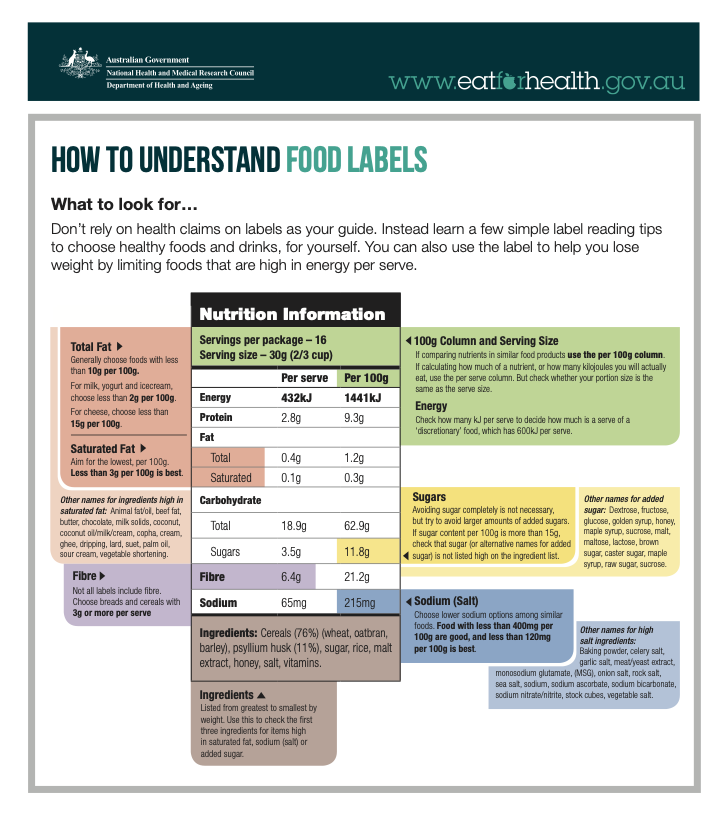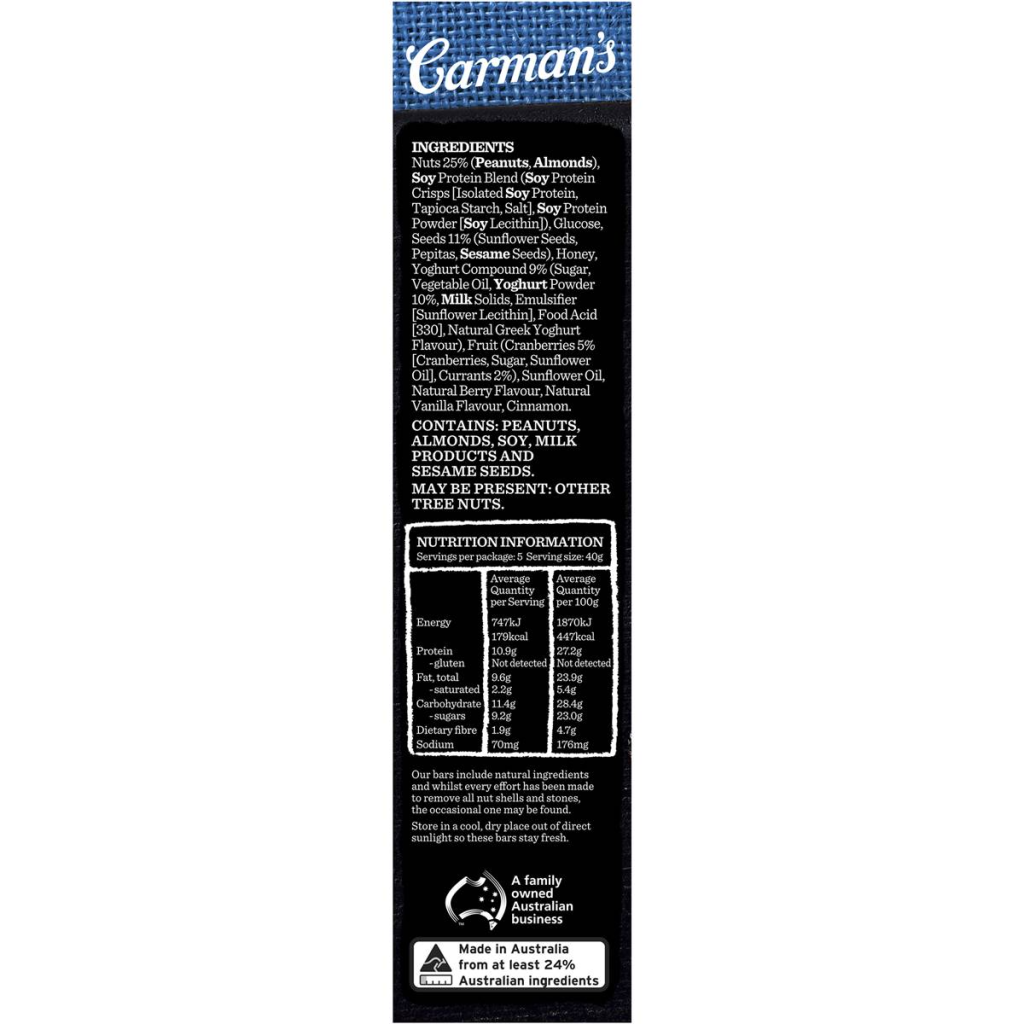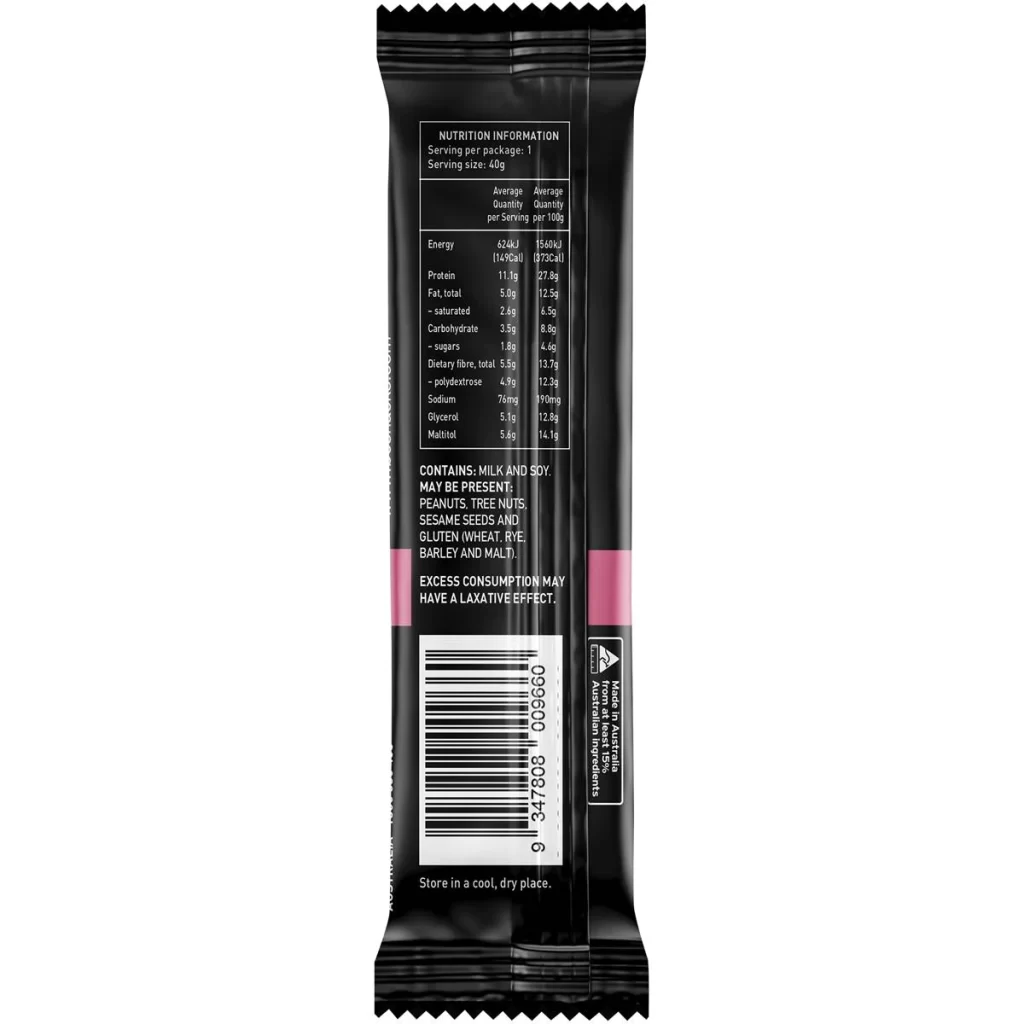Food labels provide essential information about the products we purchase. They not only enable us to track our daily nutritional intake but also assist in making informed decisions about the quality of the food we consume. However, understanding how to decipher the information on these labels can be complicated. In this guide, I will delve into what’s on a food label in Australia, how to read the Nutrition Information Panel (NIP), and how to compare products to make healthier choices.
What’s on a Food Label in Australia?
Nutrition Information Panel (NIP)
The NIP is a comprehensive breakdown of the nutrient content per serving or per 100g. Key elements include:
- Serving Size: The standardised portion upon which all nutritional values are based.
- Energy (kilojoules): The amount of energy the product provides per serving. The energy value is the total amount of kilojoules that is released when food is used by the body. Protein, fat, carbohydrate, dietary fibre, and alcohol all provide energy (kilojoules).
- Protein: The protein content aids those focusing on protein intake for muscle building or weight management.
- Carbohydrates: This includes total carbohydrates, dietary fibre, and sugars.
- Fat (total): Total fat represents the overall amount of fat present in a serving of the product.
- Saturated fat: Saturated fat specifically refers to the portion of total fat composed of saturated fatty acids.
- Fibre: Dietary fibre includes both soluble and insoluble fibres.
- Sodium: Sodium, commonly found in salt, indicates the product’s salt content.
- Sugar: The sugar content encompasses both natural sugars (intrinsic to the product) and added sugars.
- Recommended Dietary Intake (RDI): Some labels will provide the RDI percentage for specific vitamins and minerals. This is a handy tool for understanding how a particular product contributes to your daily nutritional needs. To understand the importance of macronutrients for a well-rounded diet read our guide here.
Ingredient List
The ingredient list details what makes up the product, presented in descending order by weight. This means that the first ingredient listed contributed the largest amount to the product and the last ingredient listed contributed the least. Food labels must include the percentage of a key ingredient. This is particularly useful for products where a specific ingredient is highlighted, such as fruit content in juices or whole grains in cereals.
If food additives and preservatives are used, a numerical system is used to identify these within the ingredient list. Understanding these codes allows individuals to make conscious choices about the presence of additives in their diet.
Allergens
Australian food labels are mandated to highlight common allergens present in the product. This section makes it easier to identify and avoid potential allergens such as gluten or nuts.
Date Marking
These include ‘Use By’ dates for perishable items and ‘Best Before’ dates for non-perishable goods, ensuring you consume products at their peak quality.
Health Claims
These claims are carefully regulated and can provide insights into the potential health benefits of a product. One popular claim you might find is the Health Star Rating. The Health Star Rating system simplifies the process of choosing healthier products. Ranging from 0.5 to 5 stars, this rating considers the overall nutritional profile of a product. A higher star rating indicates a healthier choice.

How to Read the NIP
Navigating the NIP may seem daunting, but it’s a valuable skill for making informed, healthy choices. Start by identifying the serving size or servings per pack if applicable, as all nutritional values are based on this standard portion. Next, if you want to identify the amount of nutrients or total kilojoules you will consume, refer to the per serve column. If comparing similar products, examine the per 100g or 100ml column. Keep an eye on key nutrients such as saturated fats, sugars, and sodium, as their excessive consumption can contribute to poor health. Aim for the following recommendations outlined by Eat For Health:

How to Compare Food Products and Make Healthier Choices
Choosing the right product for you depends on your health goals and dietary preferences. It’s a good idea to compare similar products by referring to the 100g or 100ml column. Pay attention to nutrition claims such as “low fat,” “high fibre,” or “sugar-free.” However, be cautious, as these claims can sometimes be misleading. Always cross-reference them with the actual nutritional values on the NIP for a more accurate assessment.
Protein Bar Comparison
The below NIP’s are from two popular protein bars:

Carman’s Greek Style Yoghurt and Berry Protein Bar (40g)

Bc Snacks Chocolate Brownie Crunch High Protein Bar (40g)
When looking at the per 100g column, both bars contain 27g of protein. However, the Bc bar contains lower amounts of sugar (23g vs 4.6g) and is lower in fat compared to the Carman’s protein bar. The Bc bar also contains a higher amount of fibre compared to the Carman’s bar (13.7g vs 4.7g). Therefore, if you are looking for high protein, high fibre, low sugar snacks, the Bc bar is a suitable option.
Understanding how to read food labels like in the case above, enables us to make informed decisions about our energy intake and allows us to choose products that suit our specific goals such as meeting protein targets, weight loss or dietary needs such as gluten free and keto.






